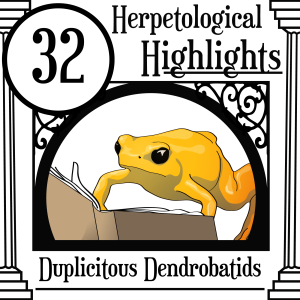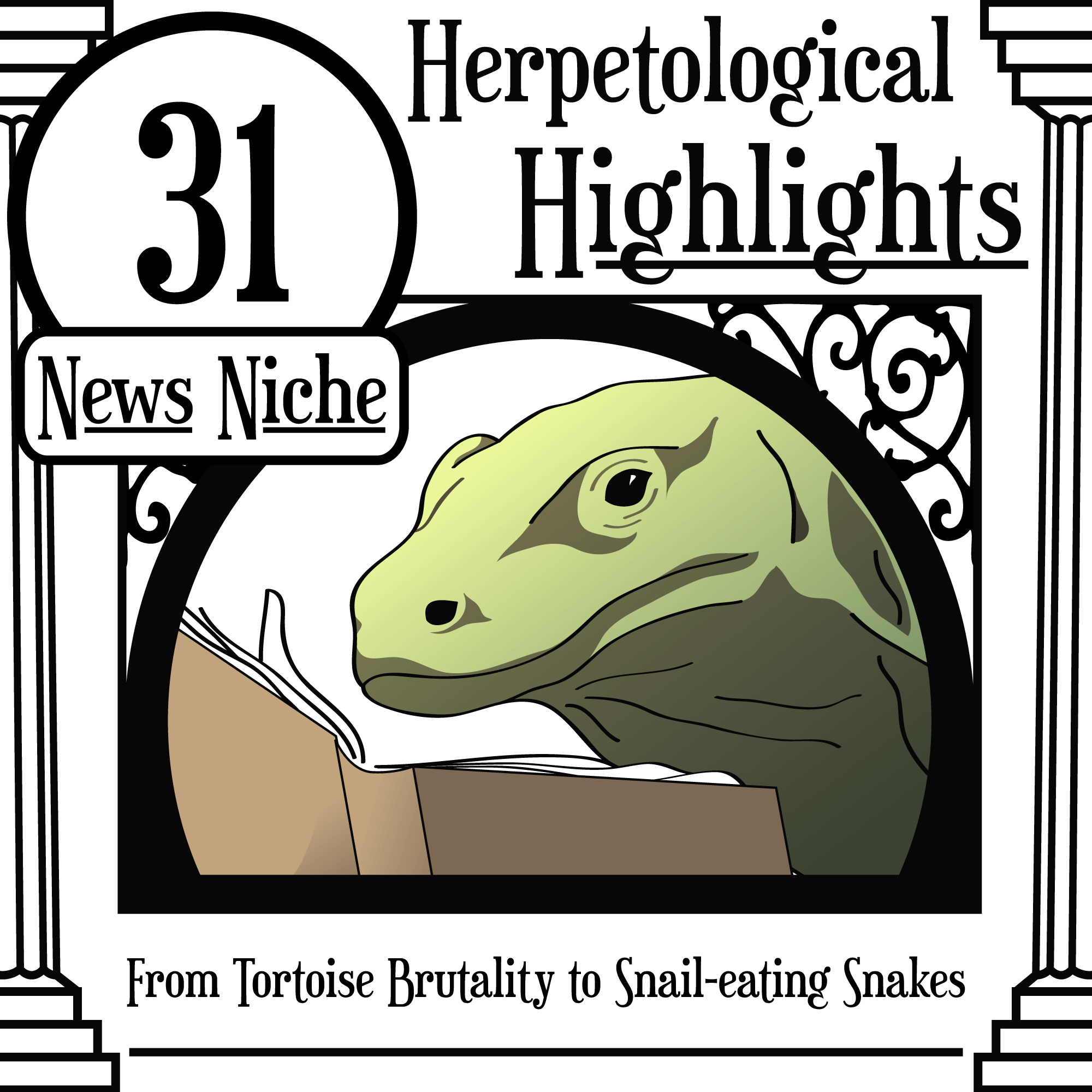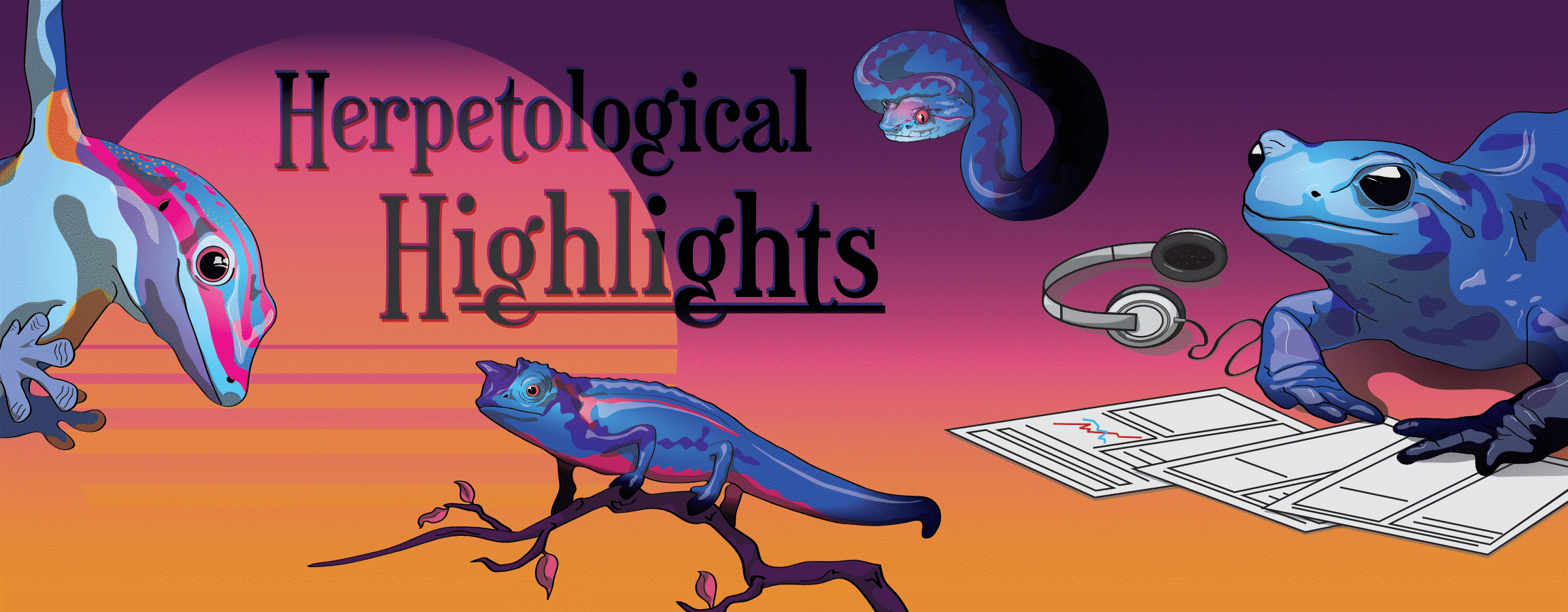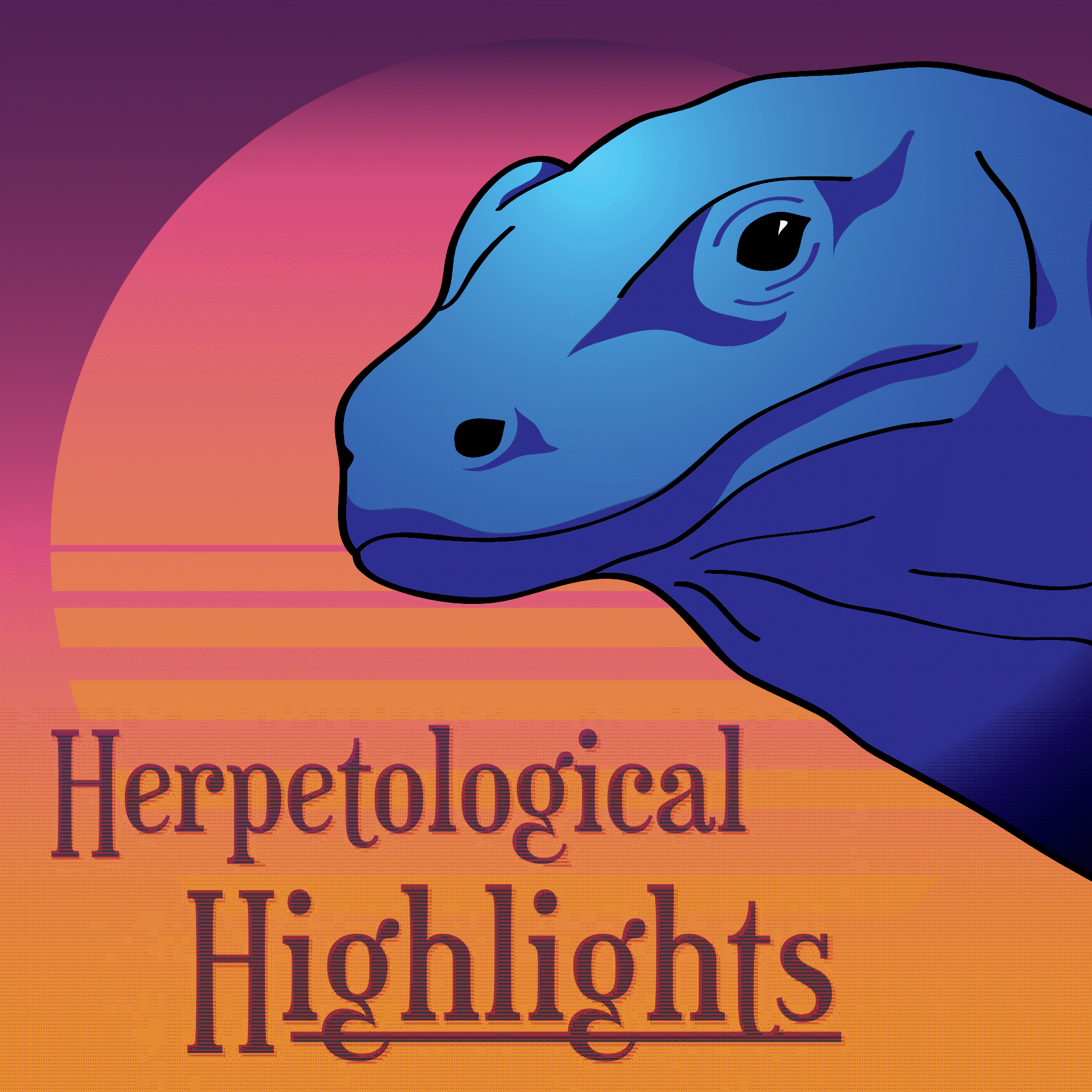Episodes

Tuesday Jul 24, 2018
032 Duplicitous Dendrobatids
Tuesday Jul 24, 2018
Tuesday Jul 24, 2018
Frogs come in loads of crazy colours - but the reasons why can be quite complicated. We try to get to grips with some fascinating new research which suggests frogs can be both cryptic and shockingly obvious. Of course we have an amphibian Species of the Bi-Week. FULL REFERENCE LIST AVAILABLE AT: herphighlights.podbean.com

Main Paper References:
Barnett, JB, C Michalis, NE Scott-Samuel, and IC Cuthill. 2018. “Distance-Dependent Defensive Coloration in the Poison Frog Dendrobates Tinctorius , Dendrobatidae.” Proceedings of the National Academy of Sciences, 201800826.
Lawrence, JP, M Mahony, and BP Noonan. 2018. “Differential Responses of Avian and Mammalian Predators to Phenotypic Variation in Australian Brood Frogs.” PLoS ONE 13 (4): 1–8.
Species of the Bi-Week:
Munir, M, A Hamidy, A Farajallah, and EN Smith. 2018. “A New Megophrys Kuhl and Van Hasselt (Amphibia: Megophryidae) from Southwestern Sumatra, Indonesia.” Zootaxa 4442 (3): 389.
Other Mentioned Papers/Studies:
Beckmann, Christa, and Richard Shine. 2012. “Do Drivers Intentionally Target Wildlife on Roads?” Austral Ecology 37 (5):629–32.
Maan, M. E., & Cummings, M. E. (2009). Sexual dimorphism and directional sexual selection on aposematic signals in a poison frog. Proceedings of the National Academy of Sciences, 106(45), 19072-19077.
Phillips, Ben, and Richard Shine. 2007. “When Dinner Is Dangerous: Toxic Frogs Elicit Species-Specific Responses from a Generalist Snake Predator.” The American Naturalist 170 (6):936–42.
Valkonen, J. K., Mäkelä, A., Mappes, J., & López‐Sepulcre, A. (In Press). Evaluating the potential for evolutionary mismatch in Batesian mimics: a case study in the endangered Smooth Snake (Coronella austriaca). Evolutionary Applications.
Wüster, W., C. S. E. Allum, I. B. Bjargardottir, K. L. Bailey, K. J. Dawson, J. Guenioui, J. Lewis, et al. 2004. “Do Aposematism and Batesian Mimicry Require Bright Colours? A Test, Using European Viper Markings.” Proceedings of the Royal Society B: Biological Sciences 271 (1556):2495–99.
Xing, L., Caldwell, M. W., Chen, R., Nydam, R. L., Palci, A., Simões, T. R., ... & Wang, K. (2018). A mid-Cretaceous embryonic-to-neonate snake in amber from Myanmar. Science Advances, 4(7), eaat5042.
Other Links/Mentions:
BBC coverage of snake in amber – https://www.bbc.co.uk/news/science-environment-44872148
Blog of snake in amber - https://natureecoevocommunity.nature.com/users/87830-tiago-r-simoes/posts/36712-a-new-chapter-on-early-snake-evolution-the-tale-of-the-snake-in-amber
Music:
Intro/outro – Treehouse by Ed Nelson
Other Music – The Passion HiFi, www.thepassionhifi.com

Wednesday Jul 11, 2018
031 From Tortoise Brutality to Snail-eating Snakes
Wednesday Jul 11, 2018
Wednesday Jul 11, 2018
Another News Niche episode! We talk about all sorts of things this fortnight: Anolis rebuttals, tortoise criminality, mollusc munching snakes and a little about the snakebite crisis. Naturally the Species of the Bi-week is not neglected, with this week hosting more species than you can snake a slug at. FULL REFERENCE LIST AVAILABLE AT: herphighlights.podbean.com

Main Paper References:
Bush, JM, and D Simberloff. 2018. “A Case for Anole Territoriality.” Behavioral Ecology and Sociobiology 72 (7): 111.
Kamath, A, and J Losos. 2018. “Reconsidering Territoriality Is Necessary for Understanding Anolis Mating Systems.” Behavioral Ecology and Sociobiology 72 (7): 106.
Golubović, A., Arsovski, D., Tomović, L., & Bonnet, X. (2018). Is sexual brutality maladaptive under high population density?. Biological Journal of the Linnean Society, 124(3), 394-402.
Stamps, JA. 2018. “Polygynandrous Anoles and the Myth of the Passive Female.” Behavioral Ecology and Sociobiology 72 (7): 107.
Yañez-Arenas, C, AT Peterson, P Mokondoko, O Rojas-Soto, and E Martínez-Meyer. 2014. “The Use of Ecological Niche Modeling to Infer Potential Risk Areas of Snakebite in the Mexican State of Veracruz.” PLoS ONE 9 (6).
Species of the Bi-Week:
Arteaga, A, D Salazar-Valenzuela, K Mebert, N Peñafiel, G Aguiar, JC Sánchez-Nivicela, RA Pyron, et al. 2018. “Systematics of South American Snail-Eating Snakes (Serpentes, Dipsadini), with the Description of Five New Species from Ecuador and Peru.” ZooKeys 766: 79–147.
Other Mentioned Papers/Studies:
Hoso, M, Y Kameda, S-P Wu, T Asami, M Kato, and M Hori. 2010. “A Speciation Gene for Left–Right Reversal in Snails Results in Anti-Predator Adaptation.” Nature Communications 1 (9): 133.
Hutter, C. R., Lambert, S. M., Andriampenomanana, Z. F., Glaw, F., & Vences, M. (2018). Molecular phylogeny and diversification of Malagasy bright-eyed tree frogs (Mantellidae: Boophis). Molecular phylogenetics and evolution.
Kamath, A, and J Losos. 2017. “The Erratic and Contingent Progression of Research on Territoriality: A Case Study.” Behavioral Ecology and Sociobiology 71 (6): 1–13.
Kamath, A, and JB Losos. 2018. “Estimating Encounter Rates as the First Step of Sexual Selection in the Lizard Anolis Sagrei.” Proceedings of the Royal Society B: Biological Sciences 285 (1873): 20172244.
Le Galliard, J. F., Fitze, P. S., Ferrière, R., & Clobert, J. (2005). Sex ratio bias, male aggression, and population collapse in lizards. Proceedings of the National Academy of Sciences, 102(50), 18231-18236.
Sazima, I. (1989). Feeding behavior of the snail-eating snake, Dipsas indica. Journal of Herpetology, 23(4), 464-468.
Other Links/Mentions:
IUCN Redlist: http://www.iucnredlist.org
Rainforest trust: https://www.rainforesttrust.org
Music:
Intro/outro – Treehouse by Ed Nelson
Other Music – The Passion HiFi, www.thepassionhifi.com

